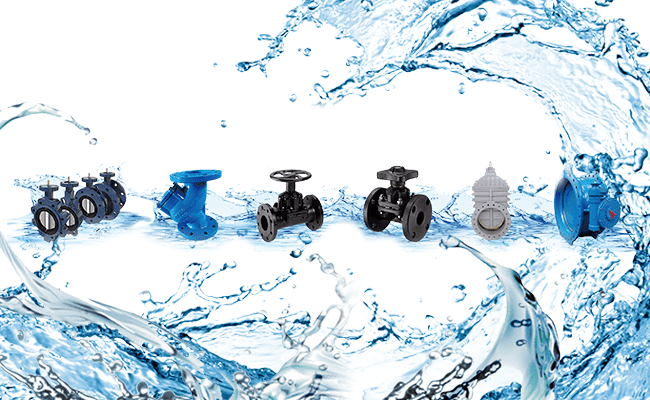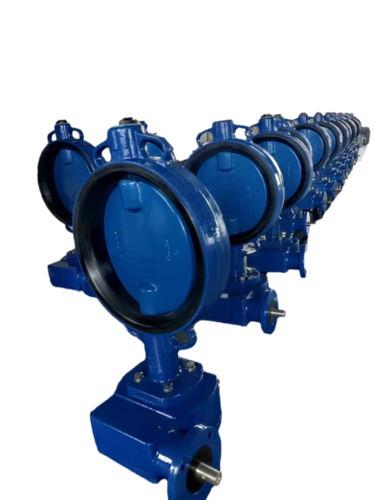Introduce the seven industries commonly used in valves and how they use valves
Valves are an extremely versatile device that can be found almost anywhere. Valves are active under streets, in houses, in power plants and paper mills, in refineries and in a variety of infrastructure and industrial facilities.
Introduce the seven industries commonly used in valves and how they use valves:
Power industry
Many power plants use fossil fuels and high-speed turbines to generate electricity. Gate valves are the first choice for power plant on/off applications. Sometimes other valves are used, such as a Y-type globe valve.
High-performance ball valves are widely used in the power industry.
Power plant applications put pipelines and valves under tremendous pressure, so valves need strong materials and designs to cope with the multiple tests of circulation, temperature and pressure.
In addition to the main steam valve, the power plant also has many auxiliary pipelines. These auxiliary pipelines consist of various globe valves, butterfly valves, check valves, ball valves and gate valves.
Waterworks
Water plants require relatively low pressure levels and ambient temperatures
Since the water temperature is normal, rubber seals and elastomers that are not suitable elsewhere can be used. These types of materials can be sealed to install the water valve to prevent water leakage
The valve of a water plant usually has a pressure much lower than 200 psi, so there is no need for high pressure and wall pressure design. Unless you need to use a valve at a high pressure point in a dam or a long waterway, you may need a built-in water valve to withstand a pressure of about 300 psi
The offshore industry
Pipeline systems in offshore production facilities and oil RIGS contain a large number of valves.These valves are available in a variety of specifications to address all flow control challenges
A key part of an oil production facility is the natural gas or oil recovery pipeline system.This system is not just used on the platform, its production systems are often used at depths of 10,000 feet or more.
On larger oil platforms, more crude oil from the wellhead needs to be processed. These processes include separating gas (natural gas) from fluid vapors and separating water from hydrocarbons.
These systems usually use ball and check valves and API 6D gate valves. API 6D valves are not suitable for applications with strict requirements on pipelines, and are generally used in internal facility pipelines on drilling ships or platforms.
Wastewater treatment
Waste water pipelines collect waste solids and fluids and lead them to sewage treatment plants. Sewage treatment plants use low-pressure pipes and valves to work. In many cases, wastewater valves have more relaxed requirements than clean water.
Check valves and PENSTOCK are the most popular choices in wastewater treatment.
Oil and gas production
Many heavy valves are used in gas and oil wells and their production facilities. The underground natural gas and oil are under tremendous pressure, and the oil and gas can be sprayed into the air as high as 100 meters.
The combination of valves and special fittings can withstand pressures above 10,000 psi. This kind of pressure is rare on land, and is more common in deep-sea oil wells.
Valves used in wellhead equipment are subject to high temperature and extremely high pressure. The valve pipeline combination usually contains a special GLOBE valve (called a throttle valve) and a gate valve. Special GLOBE valve is used to adjust the flow from the well
In addition to wellheads, there are facilities that require valves on natural gas and oil fields. These include process equipment used to pre-treat natural gas or oil. These valves are usually made of carbon steel and are of lower grade.
Water Pipeline
Many important valves are used in these pipelines: for example, emergency pipeline shut-off valves. The emergency valve can isolate a section of pipeline for maintenance or leakage.
There are also scattered facilities along the pipeline: this is where the pipeline emerges from the ground, and this is the equipment used to inspect and clean the production line. These stations contain multiple valves, which are usually ball valves or gate valves. The valves of the piping system must be fully opened to allow the passage of the sewage equipment.
Commercial building
A number of standing commercial buildings, there is a large number of pipelines inside.After all, every building needs water and electricity.For water, there must be a variety of piping systems to carry tap water, waste water, hot water, fire protection, etc.
In addition, in order for the fire protection system to work properly, they must have sufficient pressure, and the type and category of the fire protection assembly valve must be approved by the corresponding management agency before installation.


